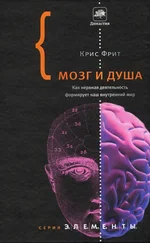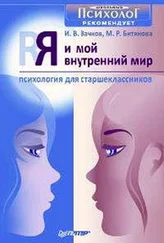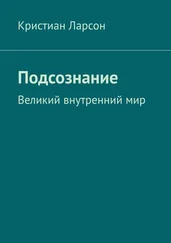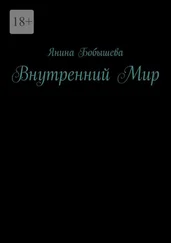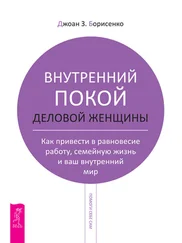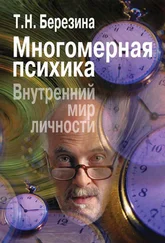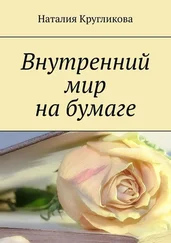Rossi, E. L. (1986) The Psychobiology of Mind-Body Healing: Hew Concepts in Therapeutic Hypnosis. New Yolk: W. W. Norton.
Salman, S. (1986) The Homed God: Masculine Dynamics of Power and Soul. Quadrant. Fall: 7–25.
Samuels, A. (1989) The Plural Psyche: Personality. Morality and the Father, London: Routledge.
Sandner, D. and Beebe, J. (1982) Psychopathology and Analysis, in M. Stein (ed.) Jungian Analysis. La Salle. Open Court: 294–334.
Satinover, J. (1985) At (he Merey of Another: Abandonment and Restitution in Psychosis and Psychotic Character, т Abandonment, Wilmette, Ill.: Chiron.
Savitz, C. (1991) Immersions in Ambiguity: The Labyrinth and the Analytic Process, Journal of Analytical Psychology 36: 461–481.
Schaefer, R. (1960) The Loving and Beloved Superego in Freud’s Structural Theory, The Psychoanalytic Study of the Child 15: 163–188.
Schwanz-Salant, N. (1989) The Borderline Personality: Vision and Healing. Wilmette, Ill.: Chiron.
Seinfeld, J. (1990) The Bad Object. Northvale, NJ.: Jason Aronson.
Semrad, E. and Van Buskirk, D. (1969) Teaching Psychotherapy of Psychotic Patients, New York: Grune & Stratton.
Shengold, L. (1989) Soul Murder: The Effects of Childhood Abuse and Deprivation, New York: Fawcett Columbine.
Sidoli, M. (1993) When the Meaning Gets Lost in the Body, Journal of Analytical Psychology, 38: 175–190.
Singer, I. В. (1981) Demons by Choice: An Interview with Parabola Magazine, in Parabola 4 (4). 68–74.
Speilrein, S. (1984) Destruction as a Cause of Coming Into Being, Journal of Analytical Psychology. 39: 155–186.
Stein, L. (1967) Introducing Not-Self. Journal of Analytical Psychology. 12 (2): 97–113.
Terr, L. (1990) Too Scared to Cry: Psychic Trauma in Childhood. New York: Harper &Row.
The Complete Grimm’s Fairy Tales (1972) New York: Random House, Pantheon Books.
Tripp, E. (1970) Classical Mythology New York: Meridian Books.
Tustin, F. (1990) The Protective Shell in Children and Adults. London: Karnac Books.
Ulanov, A. (1971) The Feminine in jungian Psychology and in Christian Theology. Evanston. Ill.: Northwestern University Press.
Ulanov, A. and Ulanov. В., (1987) The Witch and the Clown: Two Archetypes of Human Sexuality. Wilmette. Ill.: Chiron.
von Franz, M.-L. (1970) A Psychological Interpretation of the Gold Ass of Apuleius. Zurich: Spring Publications.
von Franz, M.-L (1974) Shadow and Evil in Fairy Tales, Zurich: Spring Publications.
von Franz, M.-L. (1980a) Projection and Re-collection in Jungian Psychology: Reflections on the Soul. trans. W. H. Kennedy, London: Open Court, reprinted in Parabola 4 (4):36–44.
von Franz, M.-L (1980) The Psychological Meaning of Redemption Motifs In Fairytales. Toronto: Inner City Books.
de Vries, A. (1984) Dictionary af Symbols and Imagery, Amsterdam: North-Holland Publishing Co.
Watts, A. (1954) Myth and Ritual in Christianity. London: Thames & Hudson.
Weil, S. (1987) Gravity and Grace. London: Routledge and Kegan Paul.
Whitmont, E. C. (1969) The Symbolic Quest. New York: Harper Colophon Books.
Wilmer, H. (1986) The Healing Nightman: A Study of the War Dreams of Vietnam Combat Veterans, Quadrant, Spring: 47–62.
Winnicott, D. W. (1949) Mind and its Relation to the Psyche-Soma, in D. W. Winnicott Through Paediatrics to Psychoanalysis. New York: Basic Books: 243–254.
Winnicott, D. W. (1951) Transitional Objects and Transitional Phenomena, Playing and Reality, New York: Basic Books, 1971: 1–25.
Winnicott. D. W. (1960a) Ego Distortion in Terms of True and False Self, in D. W. Winnicott The Maturational Processes and the Facilitating Environment. London: Hogarth Press, 1965: 140–152.
Winnicott, D. W. (1960b) The Theory of the Parent-Child Relationship. D. W. Winnicott The Maiurational Processes and the Facilitating Environment. London: Hogarth Press. 1965.
Winnicott, D. W. (1963) Fear of Breakdown, in C. Winnicott, R. Shepherd, M. Davis (eds) Psychoanalytic Explorations. Cambridge. Mass.: Harvard University Press. 1989:87–95.
Winnicott, D. W. (1965) The Concept of Trauma in Relation to the Development of the Individual within the Family, in C. Winnicott. R. Shepherd, M. Davis (eds). Psychoanalytic Explorations. Cambridge, Mass.: Harvard University Press, 1989: 130– 14 8.
Winnicott, D. W. (1969) The Use of an Object and Relating Through Identifications, in C. Winnicott, R. Shepherd, M. Davis (eds). Psychoanalytic Explorations. Cambridge, Mass.: Harvard University Press, 1989: 218–227.
Winnicott, D. W. (1970) On the Basis for Self in Body, in C. Winnicott, R. Shepherd, M. Davis (eds). Psychoanalytic Explorations. Cambridge. Mass.: Harvard University Press. 1989: 261–283.
Winnicott, D. W. (197la) Dreaming, Fantasying and Living, in D. W. Winnicott Playing and Reality. New York: Basic Books:
26–37.
Winnicott, D. W. (1971b) The Location of Cultural Experience, in D. W. Winnicott Playing and Realit y. New York: Basic Books: 95–103. Woodman, M. (1982) Addiction to Perfection: The Still Unravished Bride.
Toronto: Inner City Books.
Woodman, M. (1985) The Pregnant Virgin: A Process of Psychological Transformation. Toronto: Inner City Books.
Все постраничные примечания принадлежат научному редактору, концевые – авторские.
Здесь и далее в тексте я соответствует английскому self – понятию, принятому в психоаналитической теории, например, в эго-психологии и психологии самости. Часто «self» переводится на русский язык как «самость». Для того чтобы избежать путаницы с «Самостью», понятием, принятым в аналитической психологии для обозначения центрального архетипа коллективного бессознательного, мы переводим психоаналитическое понятие self как я . Там же, где автор вводит специальные термины психологии самости Кохута, например, self-object, мы используем предложенный А. М. Боковиковым в его переводах фундаментальных трудов Кохута вариант – «объект самости».
В английском тексте «diabolization», что можно было бы перевести и как «демонизация».
К сожалению, при редакторской правке текста русского перевода книги Калшеда в первом издании (второе издание полностью повторило предыдущее без каких-либо изменений) было принято решение перевести слово «daimon, δαίμων» как «демон», что вносит существенные смысловые искажения в текст перевода.
В иудео-христианской традиции демоны – падшие ангелы, которых увлек в своем падении самый могущественный ангел – Люцифер. Демоны населяют ад и воздушную сферу, служат верховному дьяволу, исполняя его злую волю, помогая ему в его непрестанной борьбе с Богом, всегда действуя во вред человеческому роду.
Читать дальше
Конец ознакомительного отрывка
Купить книгу

